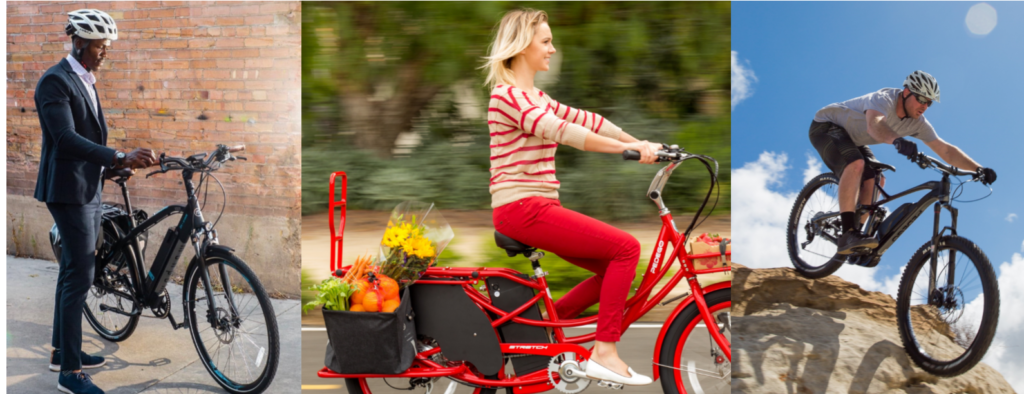BEST supports e-bikes for all: safe, equitable, accessible
BEST joins The Street Trust and others in supporting House Bill 4067 to create the Task Force on Electric Micromobility and opposing House Bill 4103 to modify the definition of an electric assisted bicycle.

Join BEST, The Street Trust, and others in supporting e-bikes for all that are safe, equitable, and accessible:
Background
The following information is provided by The Street Trust.
The purpose of transportation is to connect people and goods to places. Our system must support all Oregonians regardless of travel mode or zip code and must include everyone regardless of age, ability, race, gender, or income. Transportation is the leading source of greenhouse gas emissions in Oregon, so our investments must include broad access to public and active transportation as well as electrified modes such as electric micromobility and e-bikes.
E-bikes are a new and rapidly evolving transportation mode quickly proving to be one of the most equitable, accessible transportation options available to Oregonians. E-bikes have the potential to expand access to education and jobs for many community members including youth, low-income families, and people with limited physical ability. E-bikes increase bicycling frequency, result in greater physical activity, significantly reduce driving, and could greatly reduce greenhouse emissions if adopted widely.
Currently, safety is a primary barrier for people considering adopting e-bikes and a primary concern for our group. We believe that serious injuries and deaths in traffic are preventable through a Safe Systems Approach. We believe people using the transportation system will inevitably make mistakes, and the system should be re-designed to reduce serious consequences from those mistakes when they do happen.
Legal and regulatory definitions vary widely between cities and between states, and inconsistencies create confusion and uncertainty among consumers and road users. The current state of electric micromobility in Oregon requires a timely review of current standards and guidelines for allocating right of way for different road users. To ensure widespread adoption, e-bike policy and investments must be developed to prioritize safety, equity, and accessibility driven by best practices and the best available data and science.
House Bill 4067: Creates the Task Force on Electric Micromobility
We strongly support House Bill 4067.
This bill will provide the state with the opportunity to provide a measured approach to the complexities of the many types of Electric Micromobility devices by convening subject matter experts and introducing legislation in the transportation focused 2025 session.
House Bill 4103: Modifies the definition of an electric assisted bicycle
We oppose House Bill 4103—as currently written—due to concerns with safety, equity, and accessibility.*
As currently written, House Bill 4103:
- Constrains rather than expands opportunity for Oregon’s youth, who often lack access to transportation. While it is possible to get a driver’s permit at age 14, this bill would restrict some of the most affordable e-bike styles to people aged 16 years and older. We need to be encouraging and educating the public about micromobility options from an early age, rather than criminalizing climate- and health- and safety-conscious choices by young people. We support removing the age restriction for class 1, but would like to see the age restrictions removed from class 2, as well.
- Lacks a funding mechanism for essential electric micromobility and bicycling education, leaving Oregon’s families and youth in the dark about the new restrictions and about how to safely ride and operate e-bikes.
- Empowers cities and local communities to ban the use of certain e-bikes from accessing multi-use paths and trails, which are often the safest option for vulnerable riders, including youth, elders, and people with disabilities. This could be confusing for the public and inequitably administered across jurisdictions.
- Does not adequately address equity for Oregonians who are low-income; living with a disability; or are Black, Indigenous, or People of Color (BIPOC). For these vulnerable community members, mobility is often ‘arrested’ due to institutionalized structural racism and criminalization of poverty in policy, planning, design, infrastructure, and law enforcement. Laws that are almost challenging to enforce equitably, such as the one proposed, very often result discriminatory or inequitable enforcement.
- Enforcement based on e-bike class will be highly subjective and confusing for users. Class 3 e-bikes and out-of-class e-bikes may be enforced by their speeds, but class 1 and 2 e-bikes are largely similar in operation and safety outcomes.
- There is an absence of evidence, or inconclusive evidence, that policing policies such as this one meaningfully improve safety outcomes.
- Does not account for one of the major tenets of the Safe Systems Approach to traffic safety (the current standard of practice): that our streets should allow people to make small errors in judgment without the consequence of death. Pursuing safety goals by focusing on infrastructure and motor vehicle driver behavior is preferable to regulation of vulnerable transportation system users such as bicycle riders.
- Misses the mark on providing a clear definition for e-bikes. In particular, there is no attempt to describe the form factor of the vehicles to be regulated and no requirement for Class 2 bikes to have pedals. If a form factor were to be included, it should be careful not to preclude the further development of cargo e-bike models, including those with up to four wheels and motors in excess of 1000W.
* It is our hope that our concerns with House Bill 4103 will be taken up by the Task Force on Electric Micromobility.
Further reading
- Major e-bike bill opposed by The Street Trust (BikePortland, 2/15/24)
- E-bike laws, net zero emissions declaration, and more: BikePortland’s 2024 Oregon legislative session guide (BikePortland, 2/6/24)
- Bill would create statewide electric micromobility task force (BikePortland, 1/11/24)
- State legislator pushes ‘Trenton’s Law’ to address safety of young e-bike riders (BikePortland, 11/13/23)
- Bend lawmaker considers e-bike law changes in response to tragic teen death (BikePortland, 8/10/23)